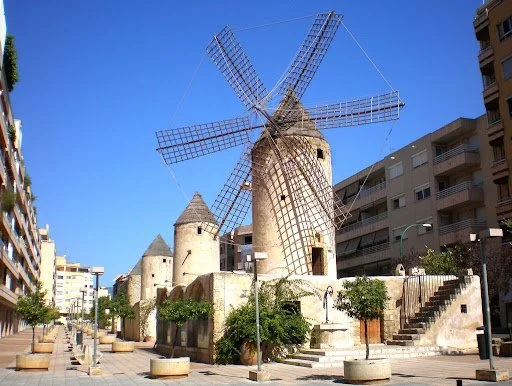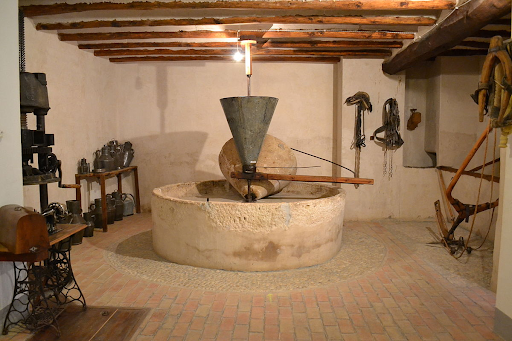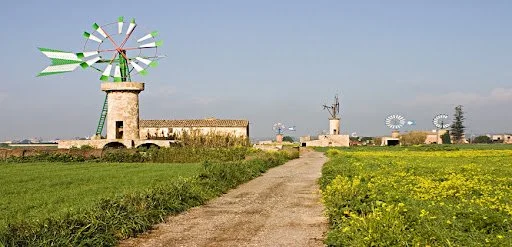What were the windmills in Mallorca used for?
Windmills in Carrer Industria, Palma de Mallorca.
It is almost impossible to drive around the island without seeing its iconic windmills. These beautiful structures are more than just pretty photo opportunities; they're a vital part of the island's history and a testament to its agricultural past.
For centuries, Mallorca's windmills were the engines of the island's economy. The classic windmills, with their conical caps and wooden sails, were primarily used for grinding grain into flour, a staple food for the local population. These “molins de farina” (flour mills) date back to the 14th–16th centuries and feature six‑blade sails, with tower types ranging from wide to narrow . You can just imagine the miller and his family living in the base, their lives dictated by the direction and strength of the wind.
The interior of a flower windmill
You can distinguish flour windmills from water‑pumping ones by their sails: flour mills use large grid‑like wooden sails, while water‑mills often have arrow‑tail pointers (colas) or fan‑like vane blades arranged to self‑orient with the wind. So basically, the ones you see with 6 sails are for flour, the ones with a full circle of blades (around 16) are the water ones.
Water extraction windmills near the airport
As you explore the island, especially across the Pla de Sant Jordi near Palma, you'll notice the later‑introduced water‑extraction windmills, or “molins d’aigua.” The first was built in 1845 by Dutch engineer Paul Bouvij to drain wetlands (laventanademallorca). Early versions had wooden ramell fan wheels, then later added arrow‑tail designs in the 1870s, and by the 1930s steel‑bladed mills became widespread . Powered by wind, these extracted groundwater to irrigate adjacent feixes (strip fields), each typically spanning 1–2 hectares through a system of capillary channels and gates underpinning historic Almoravid irrigation networks . Exact figures on how much land each mill irrigated vary with water flow and soil—some could support at least a hectare, others several, depending on the day’s wind and water table.
Sadly, with modern motors, many mills fell into disrepair. Yet restoration efforts are reviving them. Organizations like the "Friends of the Mills of Mallorca" and the Consell insular are restoring both types—some even becoming museums, restaurants, or homes. The Molí d'en Garleta in Palma, for instance, serves as a museum where you can learn first‑hand about flour and water mills.
Drive through the countryside, marvel at them, and appreciate the ingenuity behind them. The windmills of Mallorca are more than scenic props—they symbolize resilience and a slower, wind‑powered past. If you are curious about them and don’t have a car, you can join a guided tour to visit interesting villages and windmills.
🌾 Well‑Preserved Windmills to Visit
Molí d’en Fraret (Montuïri) – Flour mill, fully restored, near Son Fornés Archaeological Museum (mallorcapremiumtours.com, www).
Molí d’en Sopa (Manacor) – Flour mill, six‑sail, restored to function by local agreement (diariodemallorca.es).
Molí d’en Garleta (Palma) – Flour mill converted into a museum in El Jonquet (mallorcapremiumtours.com).
Water‑pump mills at Pla de Sant Jordi (Palma) – Numerous 19th‑century mills with arrow tails near the airport (mallorcapremiumtours.com).
Molí de Raixa (Bunyola) – 17th–18th‑century hydraulic mill with original wheel, part of a restored estate (www).



